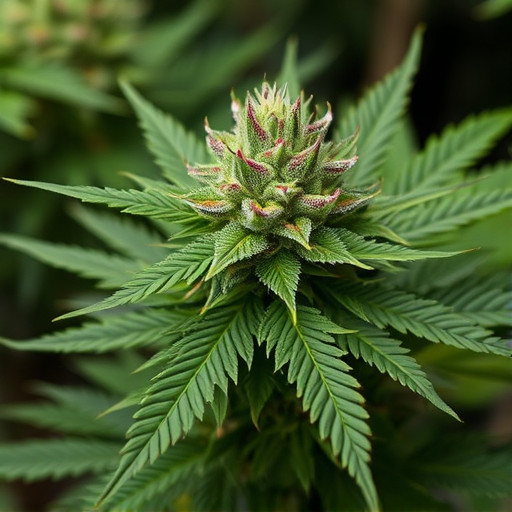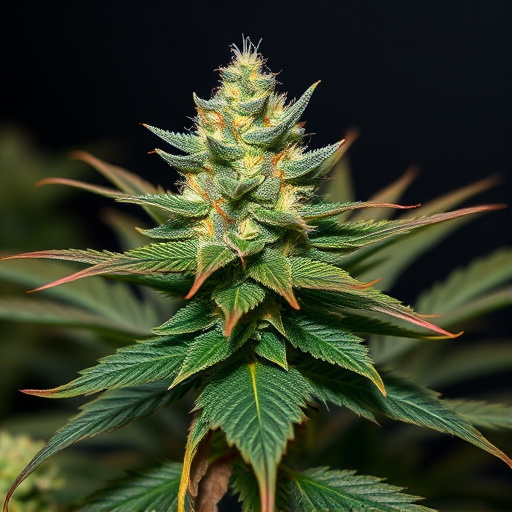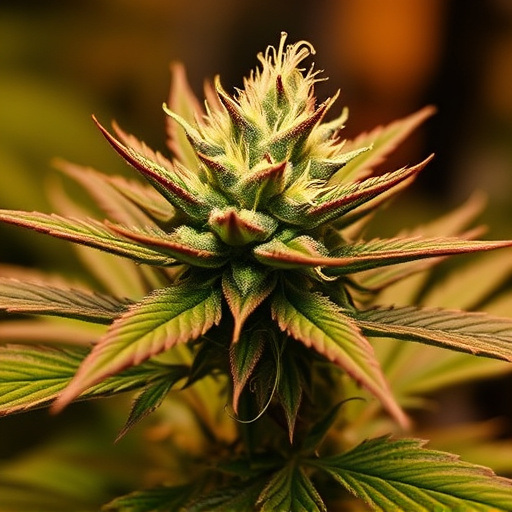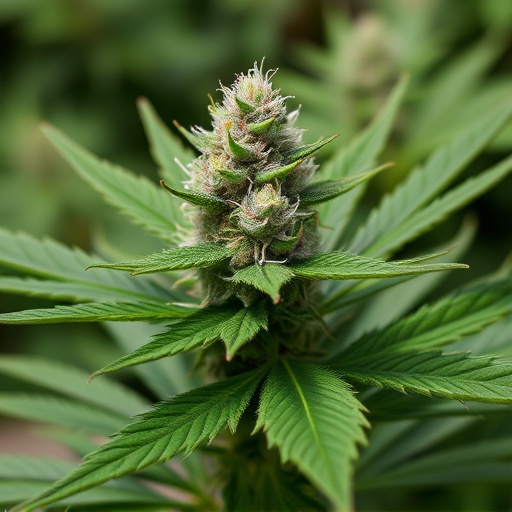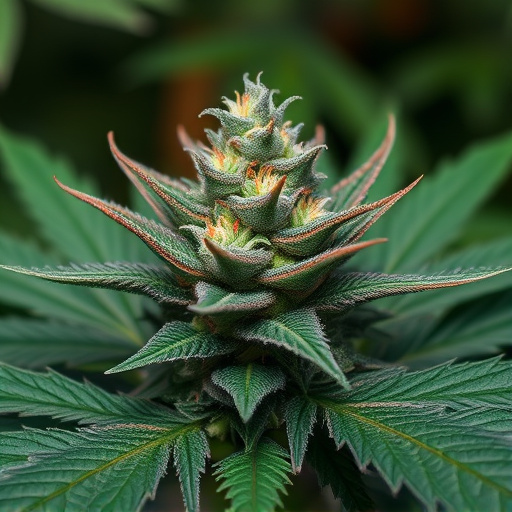THC in high-potency cannabis strains interacts with our endocannabinoid system, influencing hormones like ghrelin to regulate appetite. While this has therapeutic benefits for conditions like cachexia, it also raises concerns about potential misuse and associated health risks. The effect varies among individuals due to differences in endocannabinoid tone and cannabinoid profiles in these most potent cannabis strains. Understanding these interactions is crucial for exploring both the medical applications of cannabis and its broader impact on health and behavior.
THC, the primary psychoactive compound in cannabis, significantly influences various physiological processes within the body. This article delves into the complex relationship between THC and hunger hormones, exploring how it impacts appetite regulation. By understanding the effects of THC on these hormones, particularly among the most potent cannabis strains, we gain insights into potential therapeutic applications related to eating disorders and weight gain.
- Understanding THC and Its Impact on the Body
- The Role of Hunger Hormones and Their Regulation
- Exploring the Effects of Most Potent Cannabis Strains on Appetite
Understanding THC and Its Impact on the Body
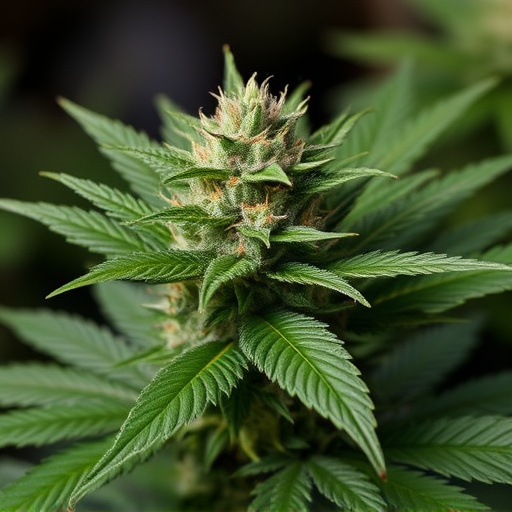
THC, or tetrahydrocannabinol, is the primary psychoactive compound found in cannabis plants, known for its distinct effects on the human body and mind. When consumed, THC interacts with our endocannabinoid system (ECS), a complex network of receptors and enzymes that play a crucial role in regulating various physiological processes, including appetite, mood, memory, and pain perception. This interaction can lead to a range of effects, which have sparked both scientific curiosity and public interest, especially among those who use cannabis for medicinal purposes.
The impact of THC on hunger hormones is an intriguing aspect of its overall effect on the body. Studies suggest that THC can stimulate appetite by influencing specific hormones, such as ghrelin, often referred to as the “hunger hormone.” In the context of exploring the most potent cannabis strains, it’s important to note that higher concentrations of THC can intensify these effects, potentially leading to increased hunger and food intake. This has both therapeutic implications for individuals with conditions like cachexia (wasting) due to chronic illness, but also considerations regarding potential misuse and its associated health risks.
The Role of Hunger Hormones and Their Regulation

The human body’s ability to regulate hunger and control food intake is a complex process, tightly controlled by various hormones. These hunger hormones play a crucial role in maintaining energy balance and ensuring survival. The most prominent players include ghrelin, leptin, and insulin—each with distinct functions. Ghrelin, often referred to as the “hunger hormone,” signals the brain when the stomach is empty, triggering feelings of appetite and cravings. Leptin, produced by fat cells, sends signals of satiety to the brain once food has been consumed, helping to curb eating. Insulin, released by the pancreas, regulates blood sugar levels and also affects appetite.
Cannabis, particularly strains known for their high THC content, can interact with this hormonal balance. THC, as a potent neurotransmitter, influences various physiological processes, including hunger. Studies suggest that THC may suppress ghrelin release, leading to reduced feelings of hunger and potential appetite loss. This effect could be beneficial for individuals aiming to manage overeating or maintain control over food intake. However, the impact of cannabis on these hormones is complex and can vary among individuals, especially when considering the diverse effects of different most potent cannabis strains.
Exploring the Effects of Most Potent Cannabis Strains on Appetite
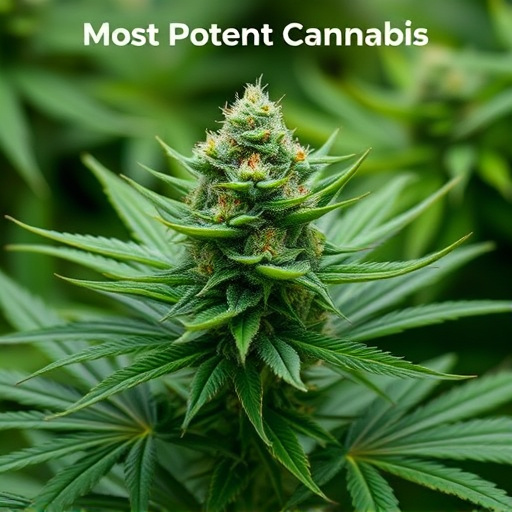
The most potent cannabis strains have long been a subject of interest in understanding their impact on human appetite and hunger hormones. These high-potency varieties, with their elevated tetrahydrocannabinol (THC) levels, offer unique insights into how cannabis interacts with our physiological systems, particularly the endocannabinoid system, which plays a key role in regulating eating behaviors. Research suggests that THC, as the primary psychoactive compound in cannabis, can influence hunger by interacting with specific receptors in the brain and gut.
When consumed, the most potent cannabis strains can lead to a complex array of effects, including increased appetite (known as “the munchies”) or, conversely, decreased hunger. The variability in responses is attributed to individual differences in endocannabinoid tone and the diverse range of cannabinoid profiles found in these high-THC strains. Exploring these effects is crucial for understanding not only the potential therapeutic applications of cannabis but also its impact on human health and behavior.
THC, the primary psychoactive compound in cannabis, significantly influences hunger hormones, offering a potential explanation for why many users experience increased appetite. Understanding how THC interacts with these regulatory mechanisms provides insights into the effects of the most potent cannabis strains on appetite. Further research is needed to explore these connections and determine their therapeutic applications, especially in fields like medicine and nutrition.



